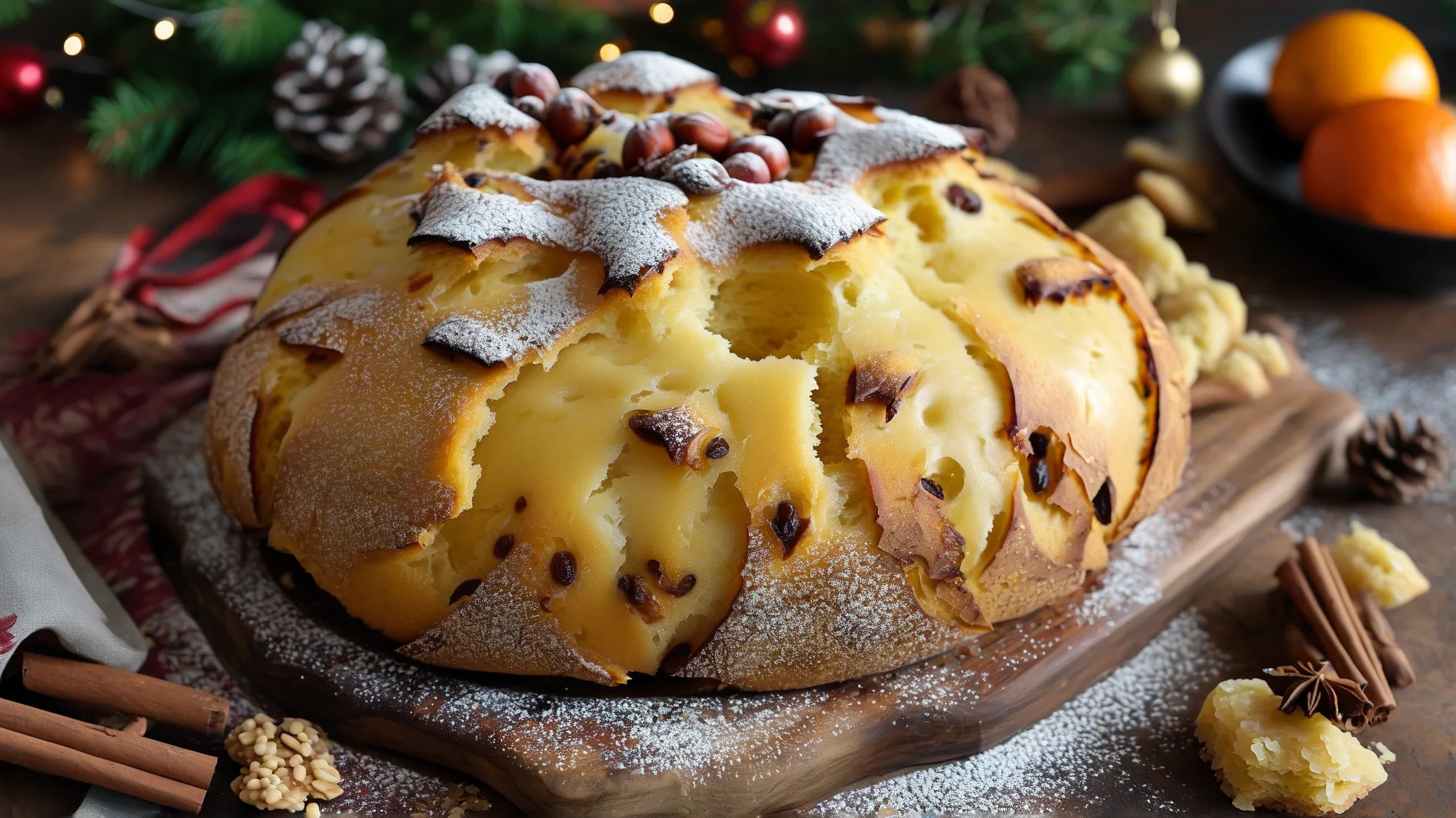While many associate panettone with Italy, Peru has developed its own cherished version of this holiday bread that combines European tradition with South American flair. The Peruvian panettone (locally called panetón) accounts for 87% of Christmas dessert consumption in the country according to the Peruvian Association of Bakery and Pastry (ASPAN). Let’s explore how to create this iconic sweet bread while preserving its signature tall dome and citrus-kissed crumb.
Essential Ingredients for Authentic Flavor
1. Flour Dynamics
Use high-protein bread flour (12-14% protein) for proper gluten development. Peruvian bakers often mix in 15% potato starch – a trick from Andean baking traditions – to achieve the characteristic lightness.
2. Fruit Fusion
Traditional recipes call for candied cabello de ángel (angel hair squash), but substitute with equal parts candied orange peel and pineapple if unavailable. Soak dried fruits overnight in pisco or rum for authentic flavor depth.
3. Starter Preparation
Create a biga starter 12-18 hours in advance:
– 200g bread flour
– 120ml whole milk at 30°C
– 5g fresh yeast
This slow fermentation enhances flavor complexity and shelf life.
Step-by-Step Baking Process
1. Dough Development
Mix starter with:
– 500g bread flour
– 6 eggs (room temperature)
– Zest of 2 mandarins + 1 lime
– 150g unsalted butter (softened)
Knead for 15-20 minutes until passing the windowpane test: stretch a dough piece thin enough to see light through without tearing.
2. Temperature-Controlled Proofing
Maintain proofing environment at 26-28°C with 75% humidity. Use an oven with light on + bowl of hot water. First rise: 3 hours until tripled in size. Punch down gently and incorporate fruits/nuts before second proof in panettone molds.
3. Baking Geometry
Use traditional paper molds or terracotta pignatte for optimal heat distribution. Insert a metal skewer through the bottom before baking – remove when internal temperature reaches 88°C (190°F) to prevent collapse.
Professional Tips from Lima’s Master Bakers
- Butter Integration: Gradually incorporate softened butter after gluten formation to prevent fat interference with yeast activity
- Inversion Cooling: Immediately hang upside-down using two cans/books for at least 6 hours to maintain structure
- Flavor Aging: Wrap in linen and let rest 24 hours before serving – the crumb continues developing aromatic compounds
- Altitude Adjustments: For high-altitude baking (common in Peru), reduce yeast by 20% and increase liquid temperature by 3°C
Common Troubleshooting Solutions
| Issue | Culprit | Fix |
|---|---|---|
| Dense crumb | Underproofed | Extend final proof by 30-45 minutes |
| Collapsed dome | Early oven door opening | Maintain steady temp; use oven light |
| Dry texture | Overbaking | Check internal temp at 85°C (185°F) |
| Sour aftertaste | Overfermented starter | Reduce biga time by 2-3 hours |
Modern Variations Maintaining Tradition
While preserving the essential formula, contemporary Peruvian bakers experiment with:
– Chocolate-Cherry: Substitute 30% flour with cocoa powder + soaked Morello cherries
– Lucuma Twist: Add 50g lucuma powder to dough + caramelized pecans
– Vegan Adaptation: Replace eggs with aquafaba (120ml) + flaxseed gel (3 tbsp)
Food historian Maricel Presilla notes: “The Peruvian panettone evolution demonstrates how immigrant food traditions become reinvigorated through local ingredients while maintaining technical precision.” For guaranteed authenticity, look for Protected Geographical Indication (PGI) ingredients like Tumbo passionfruit from Oxapampa when sourcing components.
Serve slices with a side of manjar blanco (dulce de leche) and hot chocolate – the classic Limeño pairing. Properly stored in breathable packaging, your homemade panettone will maintain optimal texture for up to 45 days, though it’s unlikely to last that long once your family tastes it!
Remember: The true secret lies in patience – from slow fermentation to proper cooling. As master baker Gastón Acurio advises: “Treat the dough like a living being; it will tell you when it’s ready through its aroma and texture, not just the clock.”

Leave a Reply